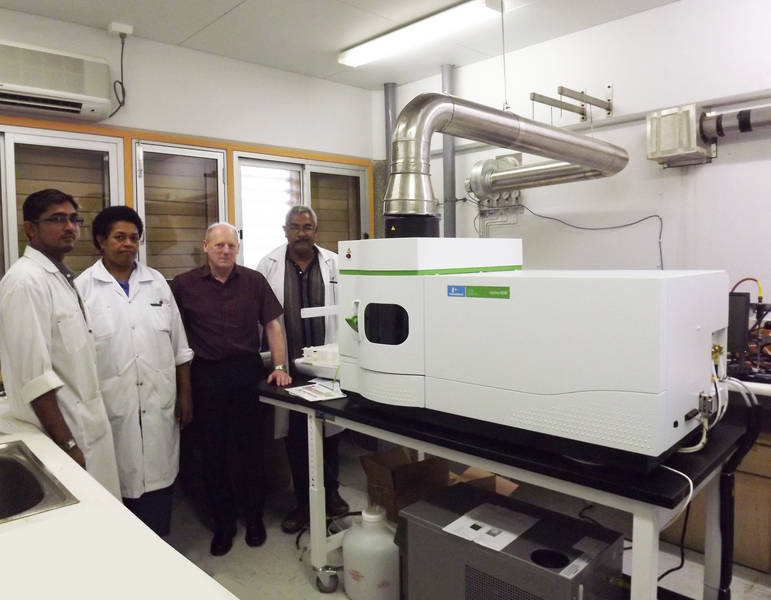Related News

A new ICP- OES (Inductively coupled Plasma – Optical Emission Spectroscopy) machine was installed at IAS in mid June 2012. Installations and pre-training were carried out by a Perkin Elmer engineer, supplier of the instrument. The ICP- OES is a powerful analytical tool and is used in the determination of some 50 elements in various sample types. Those samples can either be in an aqueous or oil medium.
The ICP-OES works by converting a sample solution into an aerosol which is pushed into a spray chamber. From here, only very fine droplets get transported by the nebulizer gas into the plasma. The ICP can generate temperatures of up to 10,000°C resulting in vaporization and atomization of samples. A process of excitation and ionization also takes place in the plasma. The process of excitation and emission of an element requires a certain amount of energy and this energy is dependent on the emission/excitation wavelength. Each element has a unique emission and excitation wavelengths. By using atomic spectrometry techniques quantitative and qualitative information about a sample can be obtained. In the ICP-OES, concentration of elements in a sample is related to the amount of electromagnetic radiation that is emitted.
The ICP-OES being a multi-element machine will greatly reduce analysis time and cost for samples requiring multi-element determination. With the large number of elements that the ICP-OES is capable of determining, the Institute is now well placed to be a player in Fiji’s booming mining industry.
With the Fiji Government pushing for more bio-fuels at gas stations, the ICP-OES will be used in determining phosphorous and other elements in bio-fuels.
IAS is awaiting the provision of high purity argon gas from which matrix that enters the plasma is made, to hold a training course in machine operation.
The cost of the instrument was supported by the Fijian Government as part of its Bio-fuels Laboratory partnership with the University.